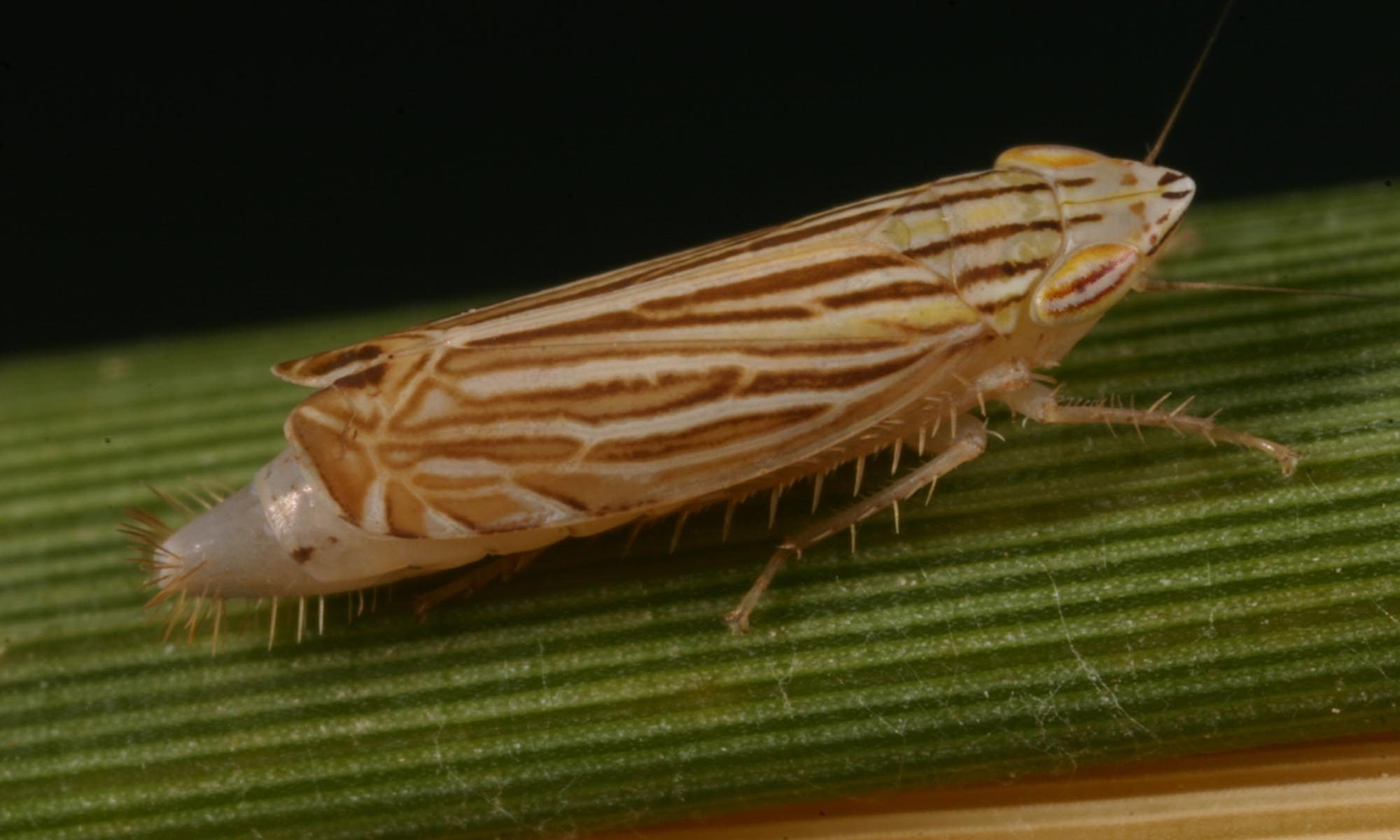Desert Leafhoppers
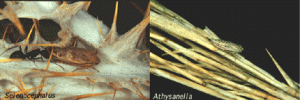
Leafhoppers feed on a variety of desert plants, including shrubs, herbs, and grasses. In the desert regions of North America, they are common on sage (Artemisia spp.), rabbitbrush (Chrysothamnus spp.) and creosote bush (Larrea tridentata). Because they obtain all the water they need from plants and can remain dormant for long periods of drought, many leafhopper species thrive in desert environments. Species in one leafhopper subfamily, Adelungiinae, are found only in desert areas of northern Africa and western Asia. Many grass feeding desert leafhoppers have short wings and are unable to fly. Flightlessness, which occurs in several unrelated groups of desert leafhoppers, is thought to be an evolutionary adaptation to the patchy distribution of desert grasses. Natural selection is thought to favor flightless individuals in these leafhoppers because of the low probability of finding a new patch of suitable host plant during dispersal by flight. Flightlessness may have promoted species diversification in some genera. The Holarctic desert leafhopper genus Athysanella, most species of which are flightless, has over 150 described species.
Grassland Leafhoppers
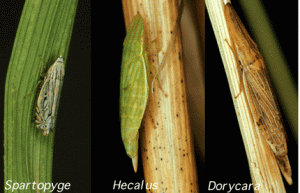
Leafhoppers are one of the most diverse and abundant families of grassland insects. Many species feed only on one or a few closely related species of grass and others specialize on a variety of other herbaceous plants common in grassland ecosystems. The largest leafhopper subfamily, Deltocephalinae, comprises the vast majority of these grass-feeding species. Thus, the origin and spread of grasslands during the Oligocene and Miocene (15-25 million years ago) may have played a major role in the evolutionary diversification of Deltocephalinae.
Wetland Leafhoppers
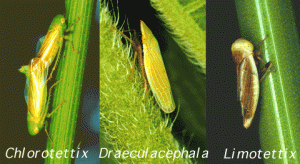
The leafhopper faunas of wetlands are very distinctive, comprising sedge- and grass-feeding species as well as many species that specialize on wetland shrubs such as willow (Salix spp.). Among the largest sedge- and grass-feeding genera are Limotettix, comprising 80 species that occur in the Holarctic region, and Chlorotettix, which includes 115 species and occurs throughout the New World. Species of Draeculacephala (25 New World species) and Xyphon (12 New World species) also are abundant in wetlands, but are apparently able to feed on a wide variety of plants. Willow-feeding leafhopper groups include numerous species of Idiocerus, Macropsis, and Kybos.
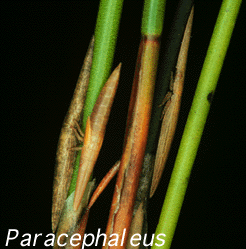 The wetland leafhopper faunas of Australia and South Africa are distinctive due to the presence of strange, elongated leafhoppers of the tribe Cephalelini. These leafhoppers apparently feed only on species of the primitive rush family Restioniaceae. Their disjunct distribution suggests that they arose prior to the separation of Gondwana during the Mesozoic. The picture on the right shows two adults and a nymph (immature) of a species of Cephalelini from Australia.
The wetland leafhopper faunas of Australia and South Africa are distinctive due to the presence of strange, elongated leafhoppers of the tribe Cephalelini. These leafhoppers apparently feed only on species of the primitive rush family Restioniaceae. Their disjunct distribution suggests that they arose prior to the separation of Gondwana during the Mesozoic. The picture on the right shows two adults and a nymph (immature) of a species of Cephalelini from Australia.
Forest Leafhoppers

Forests probably harbor more leafhopper species than any other ecosystem, and most of the species that remain unknown to science probably occur in the canopies of tropical rainforests. Recent sampling of Amazonian rainforest canopies by entomologists at the Smithsonian suggests that 80% or more of canopy leafhopper species are undescribed.
Common forest leafhoppers in North America include the deltocephaline genus Scaphoideus, some species of which have been shown to transmit tree diseases such as elm- and ash-
